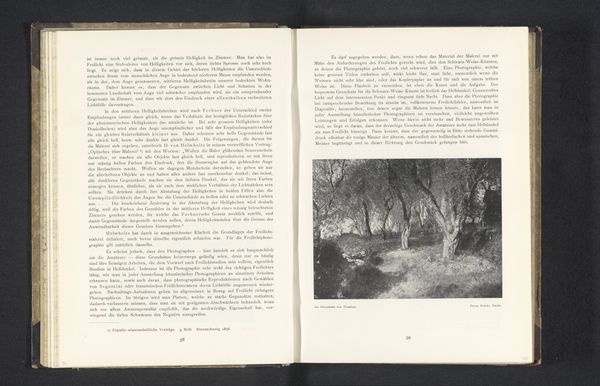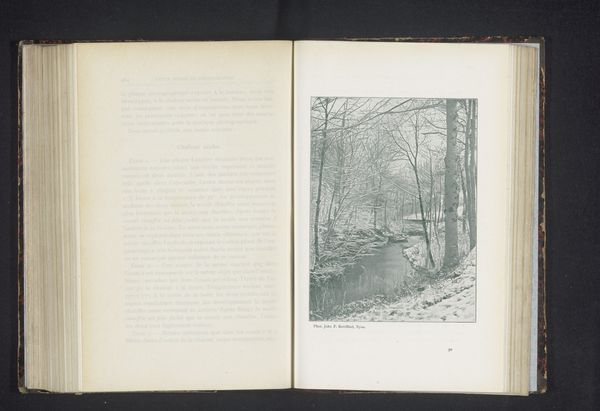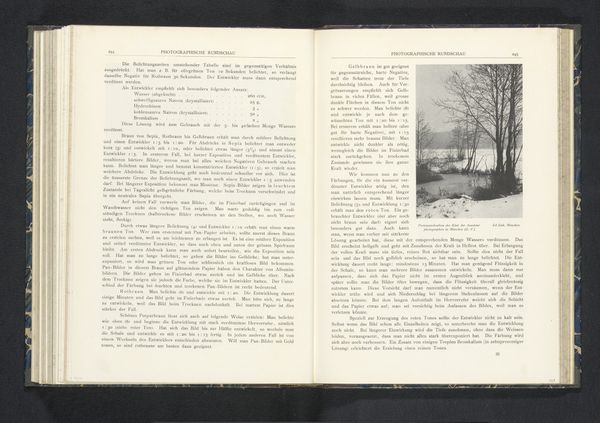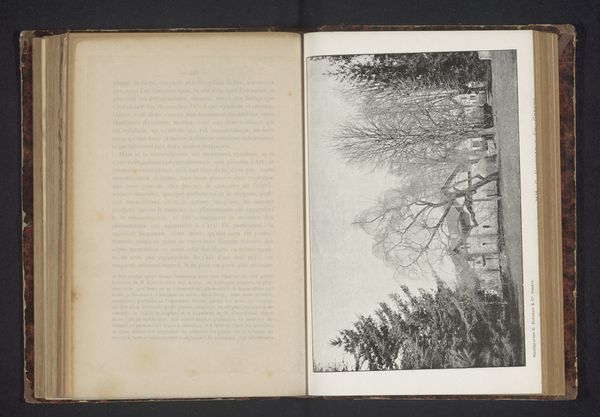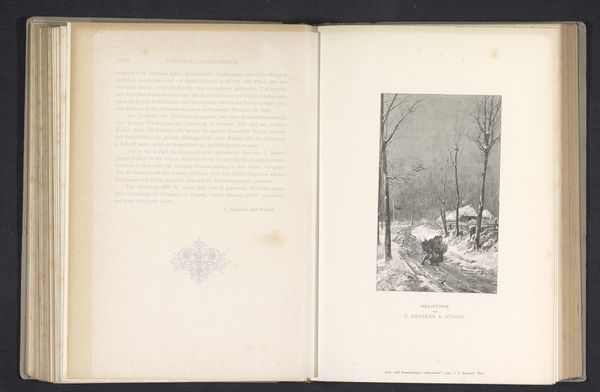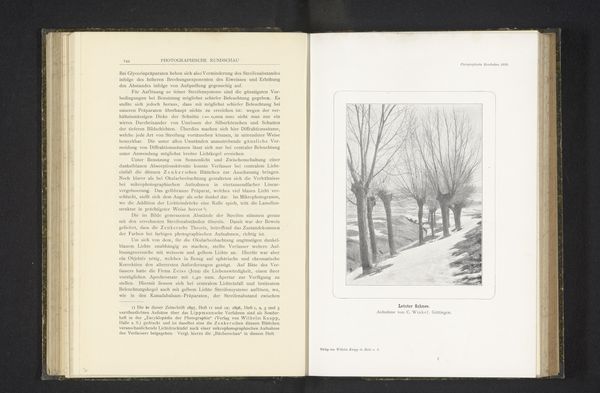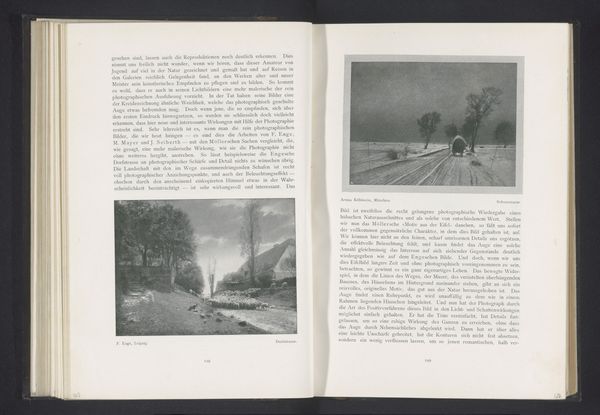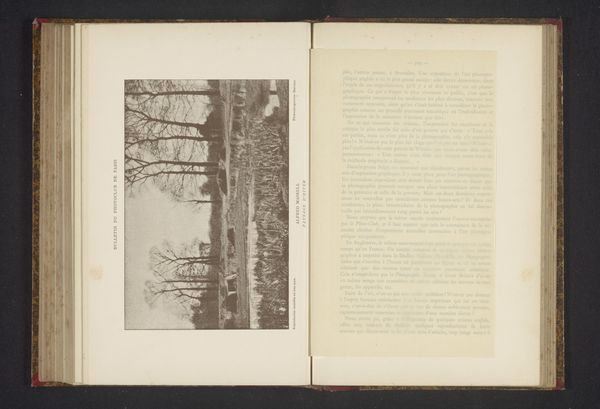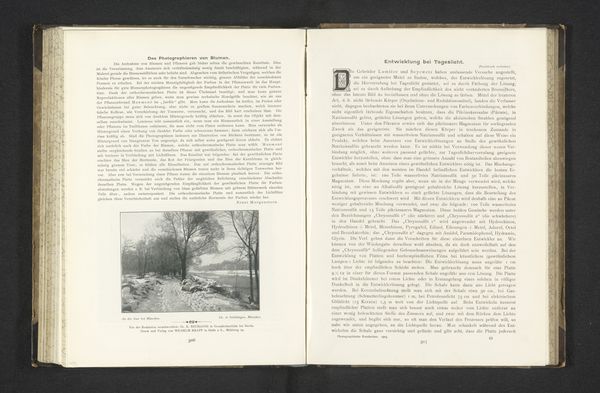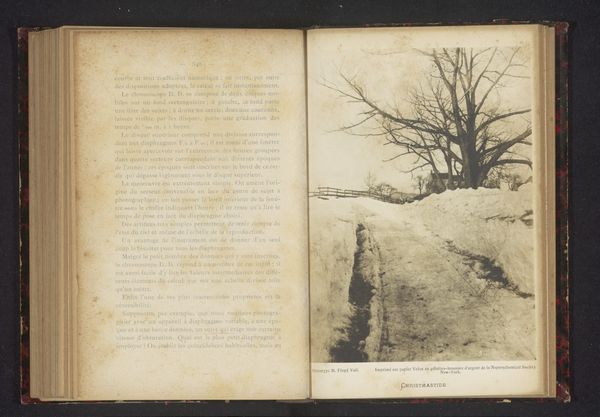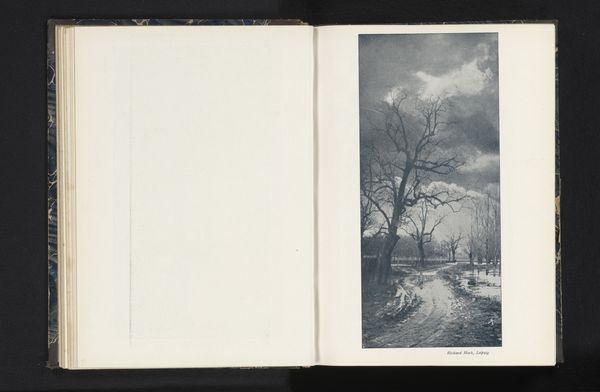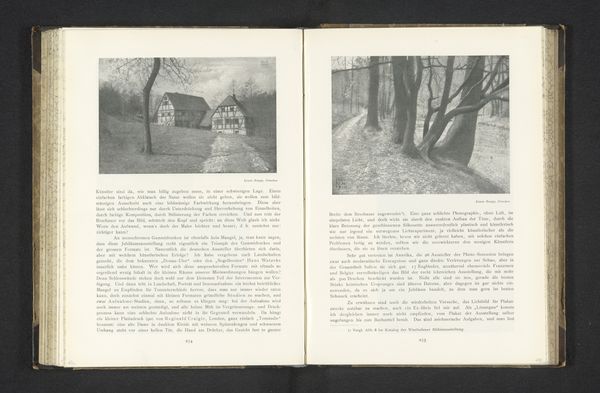
Dimensions: height 110 mm, width 140 mm
Copyright: Rijks Museum: Open Domain
Curator: Before us we have "Gezicht op de tuin van Kasteel Blutenburg bij München in de sneeuw," or "View of the garden of Blutenburg Castle near Munich in the Snow." This gelatin-silver print is credited to J. Stelzner and thought to be created before 1903. Editor: It’s bleak, isn’t it? Beautifully bleak. The contrast between the dark, almost skeletal trees and the stark white snow creates a strong visual polarity. Curator: Indeed. The photographer uses the monochromatic palette to great effect, highlighting the stark geometry of the winter landscape. Observe how the bare branches form a network of lines against the soft, diffused light of the snow-covered grounds. It's a study in textures. Editor: Beyond the composition, I wonder about the social context of such a scene. Was this a common winter sight? Was this an escape from the industrialization, or perhaps an invitation for a postcard exchange during the holidays? Curator: The time period would suggest a rise of the appreciation for photography as art form alongside Impressionism and early modernism in Europe. We see photographic societies organizing and championing photography as equal with paintings or sculpture, despite challenges of media accessibility and the gaze. Editor: I can see that; the way the light is handled feels akin to Impressionist painting. The emphasis on light and shadow, the rendering of atmosphere… Curator: Absolutely. Consider how the snow blurs the sharp lines, softening the entire scene. The tonal range is compressed, shifting our gaze towards form itself, beyond a clear objective "truth" about the space, in alignment with philosophical tenets gaining prominence at the time. Editor: Thinking about audience and accessibility in the late 19th, early 20th century, the landscape presents not just a scene but potentially a shared cultural experience, or maybe a shared dream—like what the camera promised: objective memory and access. It could also present class barriers as photography was adopted as a leisure activity. Curator: A keen observation on the photographic landscape of its time. It offers us not just a snapshot of a garden, but a tableau vivant of the era. Editor: Indeed. Analyzing these stark contrasts between shadow and blinding whiteness gives us the keys to look closely and decode a specific reading of this historical setting and time.
Comments
No comments
Be the first to comment and join the conversation on the ultimate creative platform.
